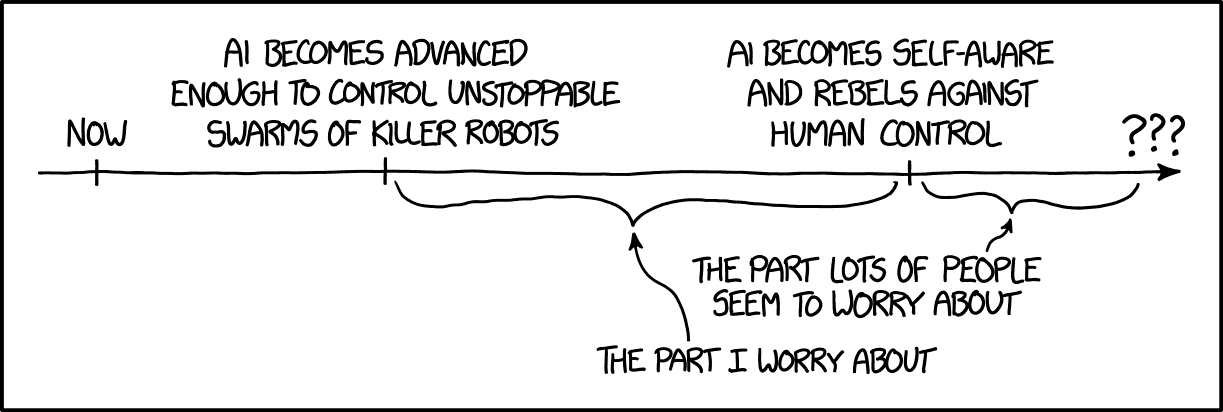1000mH 2mo ago • 100%
Cliff Bars used to come in 6 and 12 packs.
Now they come in 5 and 10. They cost more.
1000mH 3mo ago • 100%
melt it down and it add it to the rest

See anything good? For me, finally got around to **[Oppenheimer](https://fmoviesz.to/movie/oppenheimer-j2r74)**. It made for a lovely tripartite series about America's vapid anti-communism with a big boom for good measure. I can only imagine the 3-hour slog glued to a theatre seat. **[The Zone of Interest](https://fmoviesz.to/movie/the-zone-of-interest-nwkrk/1-1)** was phenomenal. Jonathan Glazer had a distinct vision in mind for his audience and he executed it with grace and style. Both visually and aurally stunning without feeling kitsch. This is a must-watch. **[Avatar: The Last Airbender (2024)](https://fmoviesz.to/tv/avatar-the-last-airbender2-l1xrn/1-1)**! It's good, folks. If you enjoyed the cartoon, you will enjoy the live-action remake. I also rewatched **[Galaxy Quest](https://fmoviesz.to/movie/galaxy-quest-y770/1-1)** on a whim and I was surprised by how well it held up. It might have helped that I've watched tons more of Star Trek since I last watched it as a kid. What have you been watching?
I've been really enjoying [Sousou no Frieren](https://123anime.info/anime/sousou-no-frieren/) and by enjoying I mean feeling like I want to cry. I'll need to find something more upbeat next.
1000mH 9mo ago • 100%
Trump reveals his son Barron is now 6’8.
did you guys see the new Trump drop 
1000mH 9mo ago • 100%
Does that mean free pizza? 
1000mH 9mo ago • 100%
IOF is crying watching this
1000mH 9mo ago • 100%
Princess of Genovia <3
1000mH 9mo ago • 100%
We're going to be very upset with you if you ever stop posting without a heads up
1000mH 9mo ago • 100%
Oh -- I'm the doomer
> The challenges involved in sending gram-class probes to Proxima Centauri could not be more stark. They’re implicit in Kevin Parkin’s analysis of the Breakthrough Starshot system model, which ran in _Acta Astronautica_ in 2018 (citation below). The project settled on twenty percent of the speed of light as a goal, one that would reach Proxima Centauri b well within the lifetime of researchers working on the project. The probe mass is 3.6 grams, with a 200 nanometer-thick sail some 4.1 meters in diameter. > > The paper we’ve been looking at from Marshall Eubanks (along with a number of familiar names from the Initiative for Interstellar Studies including Andreas Hein, his colleague Adam Hibberd, and Robert Kennedy) accepts the notion that these probes should be sent in great numbers, and not only to exploit the benefits of redundancy to manage losses along the way. A “swarm” approach in this case means a string of probes launched one after the other, using the proposed laser array in the Atacama desert. The exciting concept here is that these probes can reform themselves from a string into a flat, lens-shaped mesh network some 100,000 kilometers across. > > The Proxima swarm presents one challenge I hadn’t thought of. We have to be able to predict the position of Proxima b to within 10,000 kilometers at least 8.6 years before flyby – this is the time for complete information cycle between Earth, Proxima and back to Earth. Effectively, we need to figure out the planet’s velocity to a value of 1 meter per second, with a correspondingly tight angular position (0.1 microradians). > > > Although we already have Proxima b’s period (11.68 days), we need to determine its line of nodes, eccentricity, inclination and epoch, and also its perturbations by the other planets in the system. At the time of flyby, the most recent Earth update will be at least 8.5 years old. The Proxima b orbit state will need to be propagated over at least that interval to predict its position, and that prediction needs to be accuracy to the order of the swarm diameter. > > The authors suggest that a small spacecraft in Earth orbit can refine Proxima b’s position and the star’s ephemeris, but note that a later paper will dig into this further. > > In the previous post I looked at the “Time on Target” and “Velocity on Target” techniques that would make swarm coherence possible, with variations in acceleration and velocity allowing later-launched probes to reach higher speeds, but with higher drag so that as they reach the craft sent before them, they slow to match their speed. From the paper again: > > > A string of probes relying on the ToT technique only could indeed form a swarm coincident with the Proxima Centauri system, or any other arbitrary point, albeit briefly. But then absent any other forces it would quickly disperse afterwards. Post-encounter dispersion of the swarm is highly undesirable, but can be eliminated with the VoT technique by changing the attitude of the spacecraft such that the leading edge points at an angle to the flight direction, increasing the drag induced by the ISM, and slowing the faster swarm members as they approach the slower ones. Furthermore, this approach does not require substantial additional changes to the baseline BTS \[Breakthrough Starshot\] architecture. > > In other words, probes launched at different times with a difference in velocity target a point on their trajectory where the swarm can cohere, as the paper puts it. The resulting formation is then retained for the rest of the mission. The plan is to adjust the attitude of the leading probes continually as they move through the interstellar medium, which means variations in their aspect ratio and sectional density. A probe can move edge-on, for instance, or fully face-on, with variations in between. The goal is that the probes lost later in the process catch up with but do not move past the early probes. > > All this is going to take a lot of ‘smarts’ on the part of the individual probes, meaning we have to have ways for them to communicate not just with Earth but with each other. The structure of the probes discussed here is an innovation. The authors propose that key components like laser communications and computation should be concentrated, so that whereas the central disk is flat, the ‘heart of the device,’ as they put it, is concentrated in a 2-cm thickened rim around the outside of the sail disk. > > The center of the disk is optical, or as the paper puts it, ‘a thin but large-aperture phase-coherent meta-material disk of flat optics similar to a fresnel lens…’ which will be used for imaging as well as communications. > > So we have a sail moving at twenty percent of lightspeed through an incoming hydrogen flux, an interesting challenge for materials science. The authors consider both aerographene and aerographite. I had assumed these were the same material, but digging into the matter reveals that aerographene consists of a three-dimensional network of graphene sheets mixed with porous aerogel, while aerographite is a sponge-like formation of interconnected carbon nanotubes. Both offer extremely low density, so much so that the paper notes the performance of aerographene for deceleration is 104 times better than conventional mylar. Usefully, both of these materials have been synthesized in the laboratory and mass production seems feasible. > > Back to the probe’s shape, which is dictated by the needs not only of acceleration but survival of its electronics – remember that these craft must endure a laser launch that will involve at least 10,000 g’s. The raised rim layout reminds the authors of a red corpuscle as opposed to what has been envisioned up to now as a simple flat disk. The four-meter central disk contains 247 25-cm structures arranged, as the illustration shows, like a honeycomb. We’ll use this optical array for both imaging Proxima b but also returning data to Earth, and each of the arrays offers redundancy given that impacts with interstellar hydrogen will invariably create damage to some elements. > > Remember that the plan is to build an intelligent swarm, which demands laser links between the probes themselves. Making sure each probe is aware of its neighbors is crucial here, for which purpose it will use the optical transceivers around its rim. The paper calculates that this would make each probe detectable by its closest neighbor out to something close to 6,000 kilometers. The probes transmit a pulsed beacon as they scan for neighboring probes, and align to create the needed mesh network. The alignment phase is under study and will presumably factor into the NIAC work. > > The paper backs out to explain the overall strategy: > > > …our innovation is to use advances in optical clocks, mode-locked optical lasers, and network protocols to enable a swarm of widely separated small spacecraft or small flotillas of such to behave as a single distributed entity. Optical frequency and reliable picosecond timing, synchronized between Earth and Proxima b, is what underpins the capability for useful data return despite the seemingly low source power, very large space loss and low signal-to-noise ratio. > > For what is going to happen is that the optical pulses between the probes will be synchronized, meaning that despite the sharp constraints on available energy, the same signal photons are ‘squeezed’ into a smaller transmission slot, which increases the brightness of the signal. We get data rates through this brightening that could not otherwise be achieved, and we also get data from various angles and distances. On Earth, a square kilometer array of 796 ‘light buckets’ can receive the pulses. > > If we can achieve a swarm that is in communication with its members using micro-miniaturized clocks to keep operations synchronous, we can thus use all of the probes to build up a single detectable laser pulse bright enough to overcome the background light of Proxima Centauri and reach the array on Earth. The concept is ingenious and the paper so rich in analysis and conjecture that I keep going back to it, but don’t have time today to do more than cover these highlights. The analysis of enroute and approach science goals and methods alone would make for another article. But it’s probably best that I simply send you to the paper itself, one which anyone interested in interstellar mission design should download and study. > > The paper is Eubanks et al., “Swarming Proxima Centauri: Optical Communication Over Interstellar Distances,” submitted to the Breakthrough Starshot Challenge Communications Group Final Report and available [online](https://archive.ph/o/JX8aI/https://arxiv.org/abs/2309.07061). Kevin Parkin’s invaluable analysis of Starshot is Parkin, K.L.G., “The Breakthrough Starshot system model,” _Acta Astronautica_ 152 (2018), 370–384 ([abstract](https://archive.ph/o/JX8aI/https://www.sciencedirect.com/science/article/abs/pii/S0094576518310543) / [preprint](https://archive.ph/o/JX8aI/https://arxiv.org/abs/1805.01306)).
1000mH 9mo ago • 100%

Access, equity and solidarity: the foundations of Cuba's health system : Peoples Dispatch
Cuba has the highest ratio of doctors per inhabitant in the world. We have more than 100,000 doctors for a population of 11 million – 9.2 for every 1,000 inhabitants. We also have the highest ratio of health workers per inhabitant – 500,000 overall. But it’s not that we have leftover professionals. We don’t have so many doctors because we like training them, but because we have a health policy that employs all of them. This includes those who are in management positions and those who are committed to our international solidarity missions, our collaboration in health.
1000mH 9mo ago • 100%
source?
1000mH 9mo ago • 100%
source?
1000mH 9mo ago • 100%
source?
[Women and Minorities Bear the Brunt of Medical Misdiagnosis | naked capitalism](https://www.archive.ph/t5Z14) > In a [study published Jan. 8](https://jamanetwork.com/journals/jamainternalmedicine/article-abstract/2813854#:~:text=Findings%20In%20this%20cohort%20study,or%20permanent%20harm%20to%20patients) in JAMA Internal Medicine, researchers found that **nearly 1 in 4 hospital patients who died or were transferred to intensive care had experienced a diagnostic error. Nearly 18% of misdiagnosed patients were harmed or died.** > In all, an estimated **795,000 patients a year die or are permanently disabled because of misdiagnosis**, according to a [study published in July](https://qualitysafety.bmj.com/content/early/2023/08/07/bmjqs-2021-014130) in the BMJ Quality & Safety periodical. > > **Women and racial and ethnic minorities are 20% to 30% more likely than white men to experience a misdiagnosis**, said David Newman-Toker, a professor of neurology at Johns Hopkins School of Medicine and the lead author of the BMJ study. “That’s significant and inexcusable,” he said. > > Researchers call misdiagnosis an urgent public health problem. The study found that **rates of misdiagnosis range from 1.5% of heart attacks to 17.5% of strokes and 22.5% of lung cancers**. > Maternal mortality for Black mothers [has increased dramatically](https://www.cdc.gov/nchs/data/hestat/maternal-mortality/2021/maternal-mortality-rates-2021.htm) in recent years. The United States has the [highest maternal mortality rate](https://www.commonwealthfund.org/publications/issue-briefs/2020/nov/maternal-mortality-maternity-care-us-compared-10-countries) among developed countries. According to the Centers for Disease Control and Prevention, **non-Hispanic Black mothers are [2.6 times as likely to die](https://www.cdc.gov/nchs/data/hestat/maternal-mortality/2021/maternal-mortality-rates-2021.htm#:~:text=In%202021%2C%20the%20maternal%20mortality,(Figure%201%20and%20Table).) as non-Hispanic white moms**. More than half of these deaths take place within a year after delivery. > > Research shows that **Black women with childbirth-related heart failure are typically [diagnosed later than white women](https://www.ahajournals.org/doi/10.1161/HYPERTENSIONAHA.119.13291),** said Jennifer Lewey, co-director of the pregnancy and heart disease program at Penn Medicine. That can allow patients to further deteriorate, making Black women less likely to fully recover and more likely to suffer from weakened hearts for the rest of their lives. > > Racial and gender disparities are widespread. > > Women and minority patients suffering from heart attacks are more likely than others to be **discharged without diagnosis or treatment**. > > **Black people with depression [are more likely than others](https://www.rutgers.edu/news/african-americans-more-likely-be-misdiagnosed-schizophrenia-rutgers-study-finds) to be [misdiagnosed with schizophrenia](https://psycnet.apa.org/record/2017-49115-001).** > > **Minorities are less likely than whites to be [diagnosed early with dementia](https://jamanetwork.com/journals/jamaneurology/article-abstract/2777918),** depriving them of the opportunities to receive treatments that work best in the early stages of the disease. > > Misdiagnosis isn’t new. Doctors have [used autopsy studies](https://jamanetwork.com/journals/jama/fullarticle/196684) to estimate the percentage of patients who died with undiagnosed diseases for more than a century. Although those studies show some improvement over time, life-threatening mistakes remain all too common, despite an array of sophisticated diagnostic tools, said Hardeep Singh, a professor at Baylor College of Medicine who studies ways to improve diagnosis. > > “The vast majority of diagnoses can be made by getting to know the patient’s story really well, asking follow-up questions, examining the patient, and ordering basic tests,” said Singh, who is also a researcher at Houston’s Michael E. DeBakey VA Medical Center. When talking to people who’ve been misdiagnosed, **“one of the things we hear over and over is, ‘The doctor didn’t listen to me.’”** > > Racial disparities in misdiagnosis are sometimes explained by noting that **minority patients are [less likely to be insured](https://www.kff.org/racial-equity-and-health-policy/issue-brief/health-coverage-by-race-and-ethnicity/)than white patients and often [lack access to high-quality hospitals](https://www.kff.org/racial-equity-and-health-policy/issue-brief/health-coverage-by-race-and-ethnicity/).** But the picture is more complicated, said Monika Goyal, an emergency physician at Children’s National Hospital in Washington, D.C., who has documented racial bias in children’s health care. > > In a 2020 study, Goyal and her colleagues found that **Black kids with appendicitis were [less likely than their white peers](https://pubmed.ncbi.nlm.nih.gov/32991770/) to be correctly diagnosed, even when both groups of patients visited the same hospital**. > Demanding schedules, which prevent doctors from spending as much time with patients as they’d like, can contribute to diagnostic errors, said Karen Lutfey Spencer, a professor of health and behavioral sciences at the University of Colorado-Denver. “Doctors are more likely to make biased decisions when they are busy and overworked,” Spencer said. “There are some really smart, well-intentioned providers who are getting chewed up in a system that’s very unforgiving.” > > Doctors make better treatment decisions when they’re more confident of a diagnosis, Spencer said. > > In [an experiment,](https://www.ncbi.nlm.nih.gov/pmc/articles/PMC2676675/) researchers asked doctors to view videos of actors pretending to be patients with heart disease or depression, make a diagnosis, and recommend follow-up actions. **Doctors felt far more certain diagnosing white men than Black patients or younger women**. > > “If they were less certain, they were less likely to take action, such as ordering tests,” Spencer said. “If they were less certain, they might just wait to prescribe treatment.” > > It’s easy to see why doctors are more confident when diagnosing white men, Spencer said. For more than a century, **medical textbooks have [illustrated diseases with stereotypical images](https://www.bing.com/images/search?view=detailV2&ccid=qnhhI%2blV&id=15F07CF2A5AFBD597F620F5AF4F71F55BED21AE3&thid=OIP.qnhhI-lVv7ejI3BJxogBlQHaIV&mediaurl=https%3a%2f%2fimages.theconversation.com%2ffiles%2f242189%2foriginal%2ffile-20181025-71042-10jr3pc.jpg%3fixlib%3drb-1.1.0%26q%3d15%26auto%3dformat%26w%3d754%26h%3d849%26fit%3dcrop%26dpr%3d3&cdnurl=https%3a%2f%2fth.bing.com%2fth%2fid%2fR.aa786123e955bfb7a3237049c6880195%3frik%3d4xrSvlUf9%252fRaDw%26pid%3dImgRaw%26r%3d0&exph=2547&expw=2262&q=netter+textbook+of+medicine+heart+attack+illustration+man+in+snow&simid=608022019430614735&FORM=IRPRST&ck=EC0C3666509B2F6CA75FEDC1DA8F654F&selectedIndex=0&itb=0&ajaxhist=0&ajaxserp=0) of white men. Only 4.5% of images in general medical textbooks [feature patients with dark skin](https://www.jaad.org/article/S0190-9622(20)30700-3/pdf).** > > That may help explain why **patients with darker complexions are [less likely to receive a timely diagnosis](https://www.everydayhealth.com/black-health/too-many-doctors-are-misdiagnosing-disease-on-skin-of-color/) with conditions that affect the skin, from [cancer](https://www.ncbi.nlm.nih.gov/pmc/articles/PMC5454668/) to [Lyme disease](https://newsroom.ucla.edu/releases/black-patients-diagnosed-with-lyme-disease-later),** which causes a red or pink rash in the earliest stage of infection. Black patients with Lyme disease are more likely to be diagnosed with more [advanced disease](https://jamanetwork.com/journals/jamanetworkopen/fullarticle/2812776#:~:text=Overall%2C%20Black%20patients%20had%20a,14%5D%20days%3B%20P%20%3D%20.), which can cause arthritis and damage the heart. **Black people with melanoma are about [three times as likely as whites to die](https://www.aamc.org/news/why-are-so-many-black-patients-dying-skin-cancer) within five years.** > > The covid-19 pandemic helped raise awareness that **pulse oximeters — the fingertip devices used to measure a patient’s [pulse and oxygen levels](https://www.lung.org/lung-health-diseases/lung-procedures-and-tests/pulse-oximetry#:~:text=The%20pulse%20oximeter%20uses%20a,in%20the%20red%20blood%20cell.) — [are less accurate](https://jamanetwork.com/journals/jamainternalmedicine/fullarticle/2794196) for people with dark skin**. The devices work by [shining light through the skin](https://www.lung.org/lung-health-diseases/lung-procedures-and-tests/pulse-oximetry#:~:text=The%20pulse%20oximeter%20uses%20a,in%20the%20red%20blood%20cell.); their failures have delayed critical care for many Black patients. 
1000mH 9mo ago • 100%
Women and Minorities Bear the Brunt of Medical Misdiagnosis | naked capitalism
In a study published Jan. 8 in JAMA Internal Medicine, researchers found that nearly 1 in 4 hospital patients who died or were transferred to intensive care had experienced a diagnostic error. Nearly 18% of misdiagnosed patients were harmed or died.
In all, an estimated 795,000 patients a year die or are permanently disabled because of misdiagnosis, according to a study published in July in the BMJ Quality & Safety periodical.
Women and racial and ethnic minorities are 20% to 30% more likely than white men to experience a misdiagnosis, said David Newman-Toker, a professor of neurology at Johns Hopkins School of Medicine and the lead author of the BMJ study. “That’s significant and inexcusable,” he said.
Researchers call misdiagnosis an urgent public health problem. The study found that rates of misdiagnosis range from 1.5% of heart attacks to 17.5% of strokes and 22.5% of lung cancers.
Maternal mortality for Black mothers has increased dramatically in recent years. The United States has the highest maternal mortality rate among developed countries. According to the Centers for Disease Control and Prevention, non-Hispanic Black mothers are 2.6 times as likely to die as non-Hispanic white moms. More than half of these deaths take place within a year after delivery.
Research shows that Black women with childbirth-related heart failure are typically diagnosed later than white women, said Jennifer Lewey, co-director of the pregnancy and heart disease program at Penn Medicine. That can allow patients to further deteriorate, making Black women less likely to fully recover and more likely to suffer from weakened hearts for the rest of their lives.
Racial and gender disparities are widespread.
Women and minority patients suffering from heart attacks are more likely than others to be discharged without diagnosis or treatment.
Black people with depression are more likely than others to be misdiagnosed with schizophrenia.
Minorities are less likely than whites to be diagnosed early with dementia, depriving them of the opportunities to receive treatments that work best in the early stages of the disease.
Misdiagnosis isn’t new. Doctors have used autopsy studies to estimate the percentage of patients who died with undiagnosed diseases for more than a century. Although those studies show some improvement over time, life-threatening mistakes remain all too common, despite an array of sophisticated diagnostic tools, said Hardeep Singh, a professor at Baylor College of Medicine who studies ways to improve diagnosis.
“The vast majority of diagnoses can be made by getting to know the patient’s story really well, asking follow-up questions, examining the patient, and ordering basic tests,” said Singh, who is also a researcher at Houston’s Michael E. DeBakey VA Medical Center. When talking to people who’ve been misdiagnosed, “one of the things we hear over and over is, ‘The doctor didn’t listen to me.’”
Racial disparities in misdiagnosis are sometimes explained by noting that minority patients are less likely to be insuredthan white patients and often lack access to high-quality hospitals. But the picture is more complicated, said Monika Goyal, an emergency physician at Children’s National Hospital in Washington, D.C., who has documented racial bias in children’s health care.
In a 2020 study, Goyal and her colleagues found that Black kids with appendicitis were less likely than their white peers to be correctly diagnosed, even when both groups of patients visited the same hospital.
Demanding schedules, which prevent doctors from spending as much time with patients as they’d like, can contribute to diagnostic errors, said Karen Lutfey Spencer, a professor of health and behavioral sciences at the University of Colorado-Denver. “Doctors are more likely to make biased decisions when they are busy and overworked,” Spencer said. “There are some really smart, well-intentioned providers who are getting chewed up in a system that’s very unforgiving.”
Doctors make better treatment decisions when they’re more confident of a diagnosis, Spencer said.
In an experiment, researchers asked doctors to view videos of actors pretending to be patients with heart disease or depression, make a diagnosis, and recommend follow-up actions. Doctors felt far more certain diagnosing white men than Black patients or younger women.
“If they were less certain, they were less likely to take action, such as ordering tests,” Spencer said. “If they were less certain, they might just wait to prescribe treatment.”
It’s easy to see why doctors are more confident when diagnosing white men, Spencer said. For more than a century, medical textbooks have illustrated diseases with stereotypical images of white men. Only 4.5% of images in general medical textbooks feature patients with dark skin.
That may help explain why patients with darker complexions are less likely to receive a timely diagnosis with conditions that affect the skin, from cancer to Lyme disease, which causes a red or pink rash in the earliest stage of infection. Black patients with Lyme disease are more likely to be diagnosed with more advanced disease, which can cause arthritis and damage the heart. Black people with melanoma are about three times as likely as whites to die within five years.
The covid-19 pandemic helped raise awareness that pulse oximeters — the fingertip devices used to measure a patient’s pulse and oxygen levels — are less accurate for people with dark skin. The devices work by shining light through the skin; their failures have delayed critical care for many Black patients.

Follow the [link](https://archive.ph/18En7) for photographs. > _Archaeologists working in Switzerland have discovered many items during a dig outside of Kyburg Castle. It includes a well-preserved gauntlet dating to the 14th century._ > > Officials from the [canton of Zurich](https://www.zh.ch/de.html) announced the discovery, during a dig southeast of Kyburg Castle, a well-known medieval site near the German border. **The archaeologists came across a cellar that was destroyed by fire in the 14th century**, and it was here that forging likely took place. **Over 50 metal objects were found, including a hammer, tweezers, pliers, keys, and knives/** > > However, the most exciting discovery is the **completely preserved components of an armoured gauntlet, along with further fragments of its counterpart for the other hand**. > > Previously known gauntlets from museums and collections mostly date back to the 15th century at the earliest. Older examples from the 14th century, however, are extremely rare. So far, only five other gauntlets from this period have been found during archaeological excavations in Switzerland, although none of these pieces is anywhere near as well preserved and shows as many details of design and decoration as the Kyburg gauntlet. > > In detail, it is **a four-fold finger glove on the right hand, with the individual iron plates are placed on top of each other like scales and connected with side rivets. The individual components of the glove were attached to the inside with additional rivets on a leather or textile carrier material, which in turn was sewn onto a textile finger glove.** There are still unanswered questions about the typological development and the question of who the gauntlet once belonged to because of the few finds in Switzerland. > > Starting in late March, a copy of the sensational find will be on display in the permanent exhibition at [Kyburg Castle](https://schlosskyburg.ch/) – together with a reconstruction that shows what this important piece of armour originally looked like. The original gauntlet will also be displayed at Kyburg, but only for a short time: from September 7, 2024, European Heritage Day, it will be on loan there for three weeks.
1000mH 9mo ago • 100%
Pakistan militants struck by Iran have Israel ties: Amir-Abdollahian | The Cradle
Iranian Foreign Minister Hossein Amir-Abdollahian said on 17 January that the militant group targeted by Iran with missile strikes in Pakistan is linked to Israel.
The Iranian foreign minister said Tehran respects Pakistan's sovereignty and continues to have good relations with Islamabad.
The Iranian Minister of Defense, Brigadier General Mohammad Reza Ashtiani, repeated Amir-Abdollahian's claim, saying, “Iran respects the sovereignty and territorial integrity of neighboring countries, but will never accept the presence of machinations and conspiracies on its borders.”
Iran's Tuesday strikes in Pakistan targeted a militant group known as Jaish al-Adl, a Sunni militant and Baluchi separatist organization that operates mainly across the border in southeastern Iran.
Pakistani officials said two children were killed and three others injured, while Amir-Abdollahian said Tehran had not killed civilians. He said Iran "targeted the terrorists in Pakistan (Jaish al-Adl) and not Pakistani citizens."
Formerly known as Jundallah, the group has long-standing ties to Western intelligence agencies. ABC News reported that according to unnamed US and Pakistani intelligence sources, the group has been "secretly encouraged and advised" by the American government since 2005.
The group claims that Iran's Shiite government is oppressing its Baluchi minority and has announced responsibility for bombings, kidnappings, and televised beheadings of Iranian troops and officials.
In 2007, an analysis by Stratfor, a global intelligence consulting firm, noted the US could be using Jundullah as a "poking device" against Iran. The firm said the US "has an interest in demonstrating that it has friends among Iran's minority groups to gather intelligence, stir up public unrest and distract the clerical regime."
But in 2012, Foreign Policy reported that a series of memos written by US intelligence analysts during the last years of President George W. Bush's administration investigated and debunked reports that the CIA was supporting Jundallah. Instead, the memos described how "Israeli Mossad officers recruited operatives belonging to the militant group by passing themselves off as American agents."
Foreign Policy added that the recruitment campaign came amid "a covert, bloody, and ongoing campaign aimed at stopping Iran's nuclear program," which included the assassination of several Iranian nuclear scientists.
1000mH 9mo ago • 100%

trans
[US Supreme Court to hear Donald Trump ballot ban appeal](https://archive.ph/dFsWt#selection-2131.0-2165.311) > The US Supreme Court has agreed to consider whether Colorado can ban Donald Trump from the presidential ballot, setting the stage for a potentially landmark legal decision and political firestorm that will have major implications for the 2024 US presidential election. > > **The Supreme Court confirmed late on Friday that it would hear the case, with arguments set for February 8. That puts any decision on a collision course with the [presidential primary process,](https://archive.ph/o/dFsWt/https://www.ft.com/us-presidential-election-2024) which will start on January 15 with the Iowa caucuses, followed by the New Hampshire primary on January 23.** > > [Trump](https://archive.ph/o/dFsWt/https://www.ft.com/donald-trump) remains the undisputed frontrunner in the shrinking field of Republicans vying for the party’s nomination for president. His standing in opinion polls has only improved in recent months, as his legal troubles compound. > > The move by the highest US court comes just two days after Trump petitioned the court to overturn a decision by Colorado’s state supreme court to ban him from the presidential primary ballot there. > > The court in Colorado issued its ruling last month, saying he was not fit to be president under the 14th amendment to the constitution, which bans individuals who have engaged in insurrection or rebellion from holding office. > > Trump’s critics have labelled him an insurrectionist for his actions surrounding January 6 2021, when mobs of his supporters stormed the US Capitol in an effort to stop the certification of Joe Biden’s Electoral College victory. The former president continues to allege the US election was “rigged” against him. 
> _In April 2015, looters sacked an ancient cave burial at a site called Urd Ulaan Uneet high within the Altai Mountains of western Mongolia. When police apprehended the criminals, they uncovered, among other artifacts, an elegantly carved saddle made from several pieces of birch wood._ > > Now, in a new study, researchers from Mongolia collaborating with University of Colorado Boulder archaeologist William Taylor have described the find. The team’s **radiocarbon dating pins the artifact to roughly around the year 420 AD**, making it one of the earliest known frame saddles in the world. > > “It was a watershed moment in the technological history of people and horses,” said Taylor, corresponding author of the new study and curator of archaeology at the CU Museum of Natural History. > > He and his colleagues, including scientists from 10 countries, published their findings last month in the journal _Antiquity_. The research **reveals the underappreciated role that ancient Mongolians played in the spread of horse-riding technology and culture around the globe**. Those advances ushered in a new and sometimes brutal era of mounted warfare around the same time as the fall of the Roman Empire. > > The discovery also highlights the deep relationships between human and animals in Mongolia. For millennia, pastoral peoples have travelled between the vast grasslands of the Mongolian Steppe with their horses—which, in the region, tend to be short but sturdy, capable of surviving winter temperatures that can plummet far below freezing. Airag, a lightly alcoholic beverage made from fermented horse milk, remains a popular libation in Mongolia. > > “Ultimately, technology emerging from Mongolia has, through a domino effect, ended up **shaping the horse culture that we have in America today, especially our traditions of saddlery and stirrups**,” Taylor said. > > But these insights also come at a time when Mongolia’s horse culture is beginning to disappear, said study lead author Jamsranjav Bayarsaikhan. “Horses have not only influenced the history of the region but also left a deep mark on the art and worldview of the Nomadic Mongols,” notes Bayarsaikhan, an archaeologist at the Max Planck Institute for the Science of Human History in Germany. “However, the age of technology is slowly erasing the culture and use of horses. Instead of herders riding horses, more and more people are riding motorcycles in the plains of Mongolia.” > > #### Mounted combat > > Bayarsaikhan was working as a curator at the National Museum of Mongolia when he and his colleagues got a call from police in Hovd Province. The team later excavated the Urd Ulaan Uneet cave and unearthed the mummified remains of a horse, which the group partially described in a 2018 paper. > > **The saddle itself was made from about six pieces of birch wood held together with wooden nails. It bears traces of red paint with black trim and includes two leather straps that likely once supported stirrups.** (The researchers also reported an iron stirrup recently discovered from around the same time period in northern Mongolia). > > The group couldn’t definitively trace back where those materials came from. Birch trees, however, grow commonly in the Mongolian Altai, **suggesting that locals had crafted the saddle themselves**, not traded for it. > > Taylor explained that humans had used pads, a form of proto-saddle, to keep their rear ends comfortable on horseback since the earliest days of mounted riding. Rigid wooden saddles, which were much sturdier, paired with stirrups opened a new range of things that people could do with horses. “**One thing they very gave rise to was heavy cavalry and high-impact combat on horseback**,” Taylor adds. “Think of jousting in Medieval Europe.” > > The researchers also note that evidence from this saddle and other finds assisted the peoples of the Steppe in warfare. They write: > > > _**These improvements to equestrianism, and by inference to equestrian combat, may have contributed to the formation of early steppe polities. In addition to facilitating mounting while encumbered, stirrups gave stability to the rider’s seat and freedom of movement for the upper body, meaning that they could be more effective in shock combat—sustaining and delivering heavy ‘hacking’ blows while mounted, using lances, swords, spears and other heavy weaponry. The stirrup also enabled riders to stand in their seat, making it more secure to trot, a gait that can jostle a stirrup-less rider. So equipped, steppe riders could ride to battle with heavier armour or weapons, or use existing weapons in new ways, giving early adopters an advantage in horse combat and transport.**_ > > #### Travelling west > > In the centuries after the Mongolian saddle was crafted, these types of tools **spread rapidly west across Asia and into the early Islamic world**. There, cavalry forces became key to conquest and trade across large portions of the Mediterranean region and northern Africa. > > Where it all began, however, is less clear. **Archaeologists have typically considered modern-day China the birthplace of the first frame saddles and stirrups**—with some finds dating back to the fifth to sixth century AD or even earlier. > > The new study, however, complicates that picture, Taylor said. “It’s not the only piece of information suggesting that Mongolia might have been either among the very first adopters of these new technologies—or could, in fact, be the place where they were first innovated,” he said. > > He suspects that Mongolia’s place in that history may have gone underappreciated for so long in part because of the region’s geography. The population density in the country’s mountainous expanses is low, among the lowest on Earth, making it difficult to encounter and analyze important archaeological finds. > > Bayarsaikhan, for his part, calls for more archaeological research in the nation to better tell the story of horses in Mongolia. “Mongolia is one of the few nations that has preserved horse culture from ancient times to the present day,” he said. “But the scientific understanding of the origin of this culture is still incomplete.”
targeted content; immediately followed
I finally hit 30. I used to close my eyes and wish for time to accelerate, for the years to rush past just below my perception so that when I opened them again I would see myself somewhere else, with someone else, doing anything else. I've never had a job, not a real one anyway. I've always worked though, even as a kid. Every weekend since I can remember I have been working a stand at a flea market. My family sells clothes at four different flea markets six days a week. As a kid I helped with what I could. Eventually I helped with everything. After I graduated, weekends became six out of seven days of every week. Now we all work ourselves ragged every day. I am a tired, mindless body. We make ends meet by living within our means. I don't have a car. I don't have an income. Sometimes I'll hide a hundred dollars before handing in any sales to my dad. So maybe that makes my income a hundred dollars every two or three weeks. I mostly use that to buy vapes, cat food, and cat litter. Sometimes I'll use what's left for mutual aid or save up to do so later. I suspect I am somewhere on the autism spectrum and/or suffer from ADHD. I've been depressed for almost half my life now. I suspect I'm only still around because I am a coward. It's gotten too close to escape its pull but I won't so I am trapped. Zoloft and therapy helped for a little while but I quit after they didn't. To top it off, this was all before my egg cracked but my home situation is not one in which I can present how I would prefer even now. I went to college on the government's dime for a bachelor's in computer science. I looked at my degree once and haven't seen it since. Fragments of websites, webapps, api wrappers, an ecommerce store, blog posts, essays, and shit litter my memory, failures that weigh my conscience with shame. At this point I'm not entirely sure if I was ever actually able to write any code or if just I bullshit my way through everything in life to protect my fragile ego. But I need to get better. My life will not change unless I make it change. I need to get a job, I need to be self-sufficient, I need to grow. The largest hurdle I can see is my complete lack of experience. I graduated almost a decade ago. I'll be starting from the bottom way later than I should have. Looking at local job openings on Indeed, it seems my best bet will be some sort of IT or Help Desk role. I'm taking a break from reading theory to read about networking and cybersecurity. I remember much of the network material while the cybersecurity concepts at least make sense to me. The next step of the plan is already daunting to me. I need to write a resume. How to do this thing with no experience? An eternal problem I'll need to figure out. This is as far as I've gotten but I'm not giving up. It's about time I grow up. Thanks for reading. Apologies for whining about a job.
> President Andrés Manuel López Obrador on Friday inaugurated the federal government’s new “Well-Being Mega Pharmacy,” a facility he described as “possibly the largest pharmacy in the world.” > The opening of the Megafarmacia del Bienestar — a warehouse from which medications will be supplied to public hospitals and clinics — comes about five months after López Obrador first proposed the creation of a “kind of pharmacy, … **a warehouse with all the medicines of the world in reasonable quantities**” as a “definitive way out” of the medication shortages that have plagued his government. > There have been numerous protests against medication shortages in recent years, the most frequent of which have been demonstrations by parents of children with cancer. Shortages have eased somewhat compared to earlier in the government’s term, but many patients still encounter problems accessing the medications they need. > On Friday, López Obrador said that the establishment of the mega pharmacy will allow “everyone to have the medicines they need” wherever they are in the country and no matter whether they are rich or poor. > **All the medications that will be distributed from the new facility will be free for patients**, he said. > “This is what makes us different from our adversaries, and hopefully they’ll understand. Health care isn’t a privilege, it’s a right,” López Obrador added. > Where is the mega pharmacy? > > The facility is in Huehuetoca, a México state municipality about 60 kilometers north of central Mexico City. > > López Obrador said last month that the warehouse’s proximity to the Felipe Ángeles International Airport (AIFA) will allow medications to be promptly transported to different parts of the country. Huehuetoca borders Zumpango, the municipality where AIFA is located. > How big is it? > > López Obrador said at his Friday morning press conference that the facility — formerly a warehouse owned by department store Liverpool — **covers an area of 90,000 square meters**, but the government subsequently clarified that it’s slightly bigger than that at 94,546 square meters. > > The area is equivalent to about six or seven “Zócalos,” López Obrador said referring to the Mexico City central square. > > Saying the mega phamarcy is twice as big as the Zócalo would be more accurate given that the central square spans an area of 46,800 square meters. > > “It’s possibly the largest pharmacy in the world,” López Obrador said before challenging reporters to find out whether that was indeed the case. > > “… The pharmacy is big, big, big, and it will have all the medications that are distributed in our country’s health sector,” he said. > Who will operate it? > > The facility — which the government bought for around 1.4 billion pesos (US $82.5 million) — **will be run by state-owned medical company Birmex, while the military will assist with the logistics of moving medications around the country**. > > Birmex director Jens Pedro Lohmann Itutburu said that the mega pharmacy will have the **capacity to store 286 million “pieces” of medication**. > > He said that the facility will seek to resolve requests for medication made by hospitals and clinics affiliated with the Mexican Social Security Institute (IMSS), the State Workers Social Security Institute and the universal IMSS-Bienestar health care programs **within three hours**. > > Individual patients and doctors will also be able to submit requests for medications. > How long will it take to get medications to public hospitals? > > According to the government, public hospitals or clinics that request a certain medication or medications will receive their delivery within 48 hours. > > Air Force planes and military vehicles will be used to transport medications. > > López Obrador has stressed that **medications will even reach hospitals in remote, rural areas of the country in no more than 48 hours**. > Will the mega pharmacy actually solve Mexico’s medicine shortage problem? > > The government certainly thinks so, but experts have some concerns. > > Mauricio Rodríguez, a professor in the School of Medicine at the National Autonomous University (UNAM), questioned **whether the government will have the capacity to purchase and distribute thousands of medications on a national scale from one central location**. > > He told the Associated Press that the government is opening the mega pharmacy without providing sufficient detail about how the system will operate, especially for urgently-needed medications. > > Rodríguez also said that having such a large stockpile of drugs at one site is risky, and could sideline existing distribution systems. > > Dr. José Moya, the World Health Organization’s Mexico representative, said that a centralized medicine warehouse could be a solution to the shortages problem, but stressed the importance of a good logistical system to support it. > > “If they are considering a warehouse like this, it’s because there is a need, and this has to be very well organized,” he said.
Wondering what other hexbears are gifting their loved ones. - For mother, a set of gardening tools and hat. - For father, a leatherman multitool. - For sister, an appointment with her favorite hairdresser. - For sister, a tee shirt and tote bag from The Cure tour. I will get nothing and deserve it. What about you?
 acoup.blog
acoup.blog
> The M1 Garand is correctly considered the best battle rifle of World War II. It was the only semi-automatic rifle––meaning that it fired each time the operator pulled the trigger––to be the standard issue infantry rifle of any army during the war. Other forces were equipped with bolt-action rifles––the British Lee Enfield, Soviet Mosin Nagat, Japanese Type 99, German K98, etc.–––that required the operator to manually pull back a bolt to eject the clip, and then push it forward again to insert a fresh cartridge into the chamber. The most obvious advantage was an increased rate of fire: a semiautomatic rifleman with an M1 had an official aimed rate of fire of 24 shots per minute. Compare this to the 15 aimed shots that British soldiers were expected to pop off with a bolt-action Lee Enfield in a “mad minute” drill. And the Lee Enfield was one of the fastest bolt-action rifles ever produced! In a pinch, a GI could blast out a clip in a few seconds, approximating a burst from an automatic weapon. Furthermore, with semi-automatic fire, the shooter could stay focused on his target, whereas working the bolt generally forced the shooter off target, requiring time to reacquire a proper sight picture.

[Source](https://rarehistoricalphotos.com/fidel-castro-basketball-pictures/) with more fantastic photos. Here are a couple.  

[Source](https://rarehistoricalphotos.com/chinese-soviet-propaganda-posters/) with many more posters. Here are a few that stand out.    
 drewdevault.com
drewdevault.com
Excerpt > What will happen to AI is boring old capitalism. Its staying power will come in the form of replacing competent, expensive humans with crappy, cheap robots. LLMs are a pretty good advance over Markov chains, and stable diffusion can generate images which are only somewhat uncanny with sufficient manipulation of the prompt. Mediocre programmers will use GitHub Copilot to write trivial code and boilerplate for them (trivial code is tautologically uninteresting), and ML will probably remain useful for writing cover letters for you. Self-driving cars might show up Any Day Now™, which is going to be great for sci-fi enthusiasts and technocrats, but much worse in every respect than, say, building more trains. > > The biggest lasting changes from machine learning will be more like the following: > >- A reduction in the labor force for skilled creative work >- The complete elimination of humans in customer-support roles >- More convincing spam and phishing content, more scalable scams >- SEO hacking content farms dominating search results >- Book farms (both eBooks and paper) flooding the market >- AI-generated content overwhelming social media >- Widespread propaganda and astroturfing, both in politics and advertising



